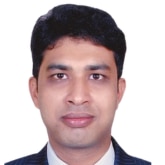Digital transformation momentum could be seen throughout Pharma Maintenance Reloaded USA and Pharma MES USA this week in San Diego. These co-located events brought together leaders in pharma and biopharma manufacturing along with solution providers for maintenance and manufacturing execution systems to share the latest technologies and best practices.
Scalable solutions are important as pharma looks to quickly adopt new technologies across a global manufacturing organization. AspenTech Inmation not only simplifies scalability to expand the capabilities' but addresses the common challenges companies face with increased complexity of OT infrastructure and growing demand for OT data storage. Inmation contextualizes OT data to make it more easily understood and securely transfers meaningful information to enterprise users/data consumers.
Do maintenance solutions need more than data?
For Pharma Maintenance Reloaded, formerly known as TechOps, the discussion covered maintenance case studies at the plant and corporate level, innovation advocacy and recapitalization as well as maintenance’s connection to other areas such as supply chain.
From the presentations, it was apparent that the industry is well aware of the challenge of over-maintenance and is in active pursuit of prescriptive solutions. For example, Thomas Harris of AstraZeneca shared a wireless sensor implementation to reduce vibration analysis from a two-week routine of measurement and analysis to a continuous process where detection and action can be completed on the same day.
The audience’s perspective and seeking engagement
During these presentations the audience questions showed what pharma wants next – the ability to scale maintenance technology across their global sites. These questions went beyond the technical side of scaling and focused on demonstrating the value of these scaling initiatives to get buy in from cross-functional stakeholders impacted by the solutions.
 |
|
A photo from my recent presentation on improving supply chain agility, based on a customer case study |
But technology was not the only topic for the maintenance sessions. There was an emphasis on people, culture and change management. During Shannon Ostendorff’s presentation on Lonza Asset Management Program (LAMP) - a global maintenance strategy - she emphasized the importance of creating and maintaining communities of engagement. By bringing together site leaders to share best practices, sites felt connected to the corporate process and more readily adopted global initiatives. Chad Kellner, on the R&D side of AstraZeneca, challenged the room to increase headspace – getting out of the back-to-back meeting cycle and increasing time for subconscious data gathering and analysis. Finally, Darin Powell of Bayer Crop Science, discussed the influence tools needed for innovation advocates.
Evolution and data integrity
While many sessions at Pharma MES looked to the future – specifically aggregation of operations data and integrating with IT architecture – speakers also touched on the traditional MES deployment. Geena Bari of Allogene, a therapeutics start-up, shared the obstacles and key learnings after implementing their first MES.
Meanwhile multiple speakers looked at MES and future potential, including bringing shopfloor data to the common data layer, cloud MES and reducing point-to-point data connectivity. Will Penland of Boehringer Ingelheim emphasized the need to share, rather than compete for data internally through a proven data management strategy that simplifies workload. And there was a strong turnout for Michal Krause’s session when he discussed AspenTech InmationTM’s ability to consolidate and contextualize industrial data and securely move it to the enterprise level.
Specific MES use cases were also discussed throughout the session. Daniel Trivino of Takeda discussed recipe design and management within MES including regulatory requirements and validation. Other MES-specific topics included improved data integrity and electronic batch record (EBR).
These focused conferences are a great source of collaboration – attracting the right stakeholders from across pharma and suppliers. Perhaps the most rewarding aspect of the event is the willingness of the community to share and work together – be it a networking break or an interactive, small-group working session. I started the day reminding the attendees that if you see an idea that has potential at your site, first ask yourself about people, behavior and culture. Without proper investment in these areas digital transformation is destined to crawl.
.png?h=250&w=975&la=en&hash=EFD673B552D7FD0C7B1CCBA80EC6379C)

Leave A Comment